Canadian Naval Aviator - Bob Murray, Lieutenant-Commander
Bob Murray shares stories about flying Sikorsky S-55 HO4S-3 rescue helicopters with the Royal Canadian Navy, and the flight missions he completed as a Lieutenant-Commander in Shearwater, Nova Scotia, such as landing on a USS Triton submarine during a rescue mission.
"Voices from the Canada Aviation and Space Museum", a new documentary film series produced by the Canada Aviation and Space Museum, in collaboration with Outsiders Films Inc., focuses the spotlight on men who have left their mark on Canada's aviation history.
Bob Murray shares stories about flying Sikorsky S-55 HO4S-3 rescue helicopters with the Royal Canadian Navy, and the flight missions he completed as a Lieutenant-Commander in Shearwater, Nova Scotia, such as landing on a USS Triton submarine during a rescue mission.
"Voices from the Canada Aviation and Space Museum", a new documentary film series produced by the Canada Aviation and Space Museum, in collaboration with Outsiders Films Inc., focuses the spotlight on men who have left their mark on Canada's aviation history.
Transcript
Voices from the Canada Aviation and Space Museum
Interview with Bob Murray
00:00:00 (ANIMATED LOGO)
OUTSIDERS FILMS
00:00:10 (TITLE)
CANADA AVIATION AND SPACE MUSEUM
00:00:13 (TITLE)
Canadian Naval Aviator
00:00:20
(VISUALS)
00:00:38
Bob? The one thing that people want to know is well, first of all why did you love this aircraft and secondly, what were the flying characteristics of this aircraft?
00:00:46
You had such a good view from this helicopter when you were flying it. It was one good thing about it.
00:00:49 (TITLE)
Bob Murray
Lieutenant-Commander RCN (ret'd)
00:00:52
And it was so smooth flying it compared with the HUP which I flew before. This one here was just as smooth and good instrumentation. You had no problems with the sight from the thing looking out both sides of it. And it was just a nice airplane to fly.
00:01:12
So what was a typical mission on this aircraft looking for submarines?
00:01:17
Well, we had six in the carrier and we used to deploy them two at a time so you would, and again we were only flying uh, during the daylight hours so we were called sundowners. And uh, from the Tracker people and uh, we would then take off to and we would be positioned in front of the storage or the aircraft carrier, one on each side and we’d sit in a hover; the ball would be in the water about seventy-five feet down with a hundred foot cable on it.
00:01:52
The ball is the sonar ball?
00:01:55
Sonar ball.
00:01:57
And we would then sit and try to detect submarines. Best about those submarines did not like helicopters ‘cause you could never tell where the devil we were. They could hear you when you were in hover in the submarine, but they wouldn’t know where you were going to go next, which was one good thing about them. So we would do about a thousand-foot jumps at a time all over one way, then one way.
00:02:19
And you had the pilot would be flying here; the co-pilot, he’d be doing all the navigation. And you would tell him where you wanted to go and we would then jump from one position to the other all along or, well, this aircraft could about get four hours out of it. But we would never stay out four hours, usually on about an hour to two hours at a time, especially when you’re down south when there’s uh, heat and no wind. You had a problem staying in a hover and you had the collective up underneath your armpit, just kind of sit and hover and then the sonar operator, they would...
00:02:58
You were sitting here. As captain of the airplane, you had to listen to what your sonar operator was talkin’ about down below; you had to listen to what your co-pilot was saying, where you should go next; you had to listen to the ship to tell you if you were going to be jumping. You had to listen to the Tracker who was sitting over your head and then you had to listen to the Argus who was sittin’ over him again so you had to know where everybody is.
00:03:21
That’s why they put the big numbers on the helicopters because the ships couldn’t really see. Look at the colour here and you look at the colour of water, there’s not much difference in the colours. So you had to also make yourself little turns now and then to see where the ship was so it wouldn’t run you down. You had a problem that way.
00:03:40
That’s because you were out in front of them looking for submarines?
00:03:41
Yes, yup.
00:03:43
Typical number of crew on an anti-submarine warfare?
00:03:48
In the helicopter? Three: two pilots and a sonar operator.
00:03:52
And the pilot has to keep track of all these of these players at once?
00:03:57
All of these, yes, all at once, yup, while flying the helicopter. I mean your feet are going on the pedals; you got your collective here and your cyclic, so you had both hands and your feet going and you had to be listening to what everything else was going on around you.
00:04:10
So we have the doors off today; when you were flying, did you fly without doors?
00:04:19
No, the doors were on, but usually open except on the co-pilot’s side. He usually has his closed because of the noise level from the exhaust down there. And you had to be listening too. And he had to talk to you.
00:04:30
At the same time. Now is that over the ‘com or did you keep one earphone off so you could talk to each other up front?
00:04:38
No, there was, everything was all over the intercom, yup.
00:04:41
So the exhaust is coming out of the port side here, you can see it?
00:04:42
Yes
00:04:48
Is that the reason that the pilot is in the right-hand seat?
00:04:52
Right, yes, especially at night time. Uh, night time over land, we’d fly over land but at sea, you didn’t do any night flying at sea especially when you were down south because the exhaust on that side and a lot of moisture, the whole cockpit looked like the inside of a dirty milk bottle. And we tried it one night, Theo and I, we went off and got off on the ship and looked around; we couldn’t see anything. We had to stick with our head out the window looking to where we were going to get around the ship and back on and say, “Fine, thank you, but no thank you.” You would never go to a hover.
00:05:25
(VISUALS)
00:05:45
What sort of decks have you flown off in your career?
00:05:49
Oh, three different carriers, most of the uh, helicopter carrying destroyers at that time; submarines, I’ve landed on submarines.
00:05:59
You’ve landed on submarines?
00:06:00
Yes
00:06:02
Now, can you describe the landing on a submarine?
00:06:04
Well, the only one I can remember was the Americans’ biggest submarine and that we had to go pick up people at—went over land. There was lots of area there but usually with a submarine, you hover over and pick people up with a hoist. But that was one aircraft, uh, submarine I did land on.
00:06:22
Do you remember what the name of the submarine was?
00:06:25
Trident
00:
Oh, it was Trident?
00:06:28
Yes.
00:06:28
(VISUALS)
An Interview With Bob Murray,
Lieutenant-Commander RCN (ret'd)
Canada Aviation and Space Museum
Associate Director General Stephen Quick
Project Lead Renée Racicot
Site Coordinator Johic Nicolas
Technical Support Jean-François Labrosse
Executive Assistant/Volunteer Lead Linda Dupuis
Lift Jockey Gary Sanford
Conservation Technician (Aircraft) Matt Bruce
Conservation Aircraft Specialist Lee Norris
Conservation Aircraft Specialist Corey Stephen
conservation Aircraft Specialist Mike Irvin
Photographer Richard Lawrence
Director General Anthony Smyth
Director of Operations Marc Ducharme
Manager – Conservation Sue Warren
Manager – Technical Services Bruce Malanka
Manager – Internal Communications,
New Media and Inter-Governmental Affairs David Sutin
Outsiders Films Crew
Interviewer Stephen Quick
Producer Ginette Petit
Director of Photography & Film Editing Alain Baril
Sound Recordist Marc Larouche
Makeup Artist Sara Kryszak
Music Westar Music
We would like to thank Mr. Bob Murray for allowing us access
to his personal archival collection.
We would also like to thank all the employees of the Canada
Aviation and Space Museum for their passion, dedication, and
patience during the filming of this production.
©The Canada Aviation and Space Museum – 2010
CANADA AVIATION AND SPACE MUSEUM



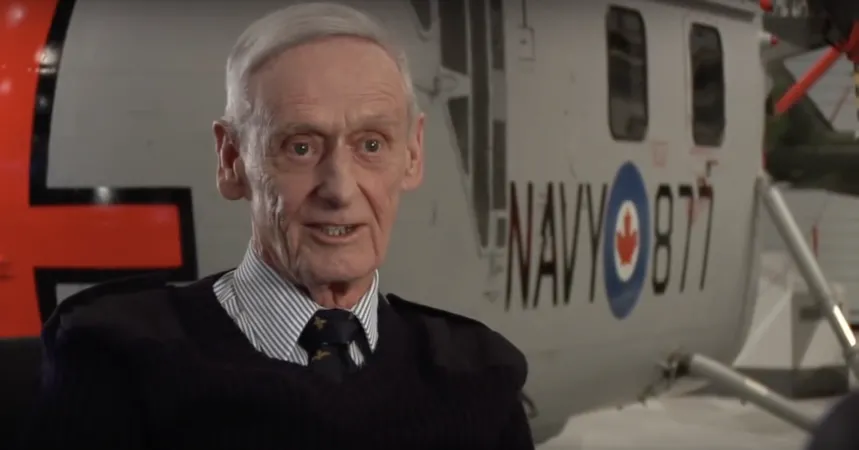

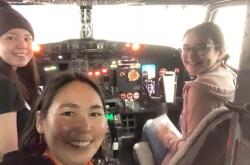
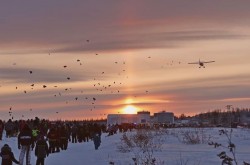

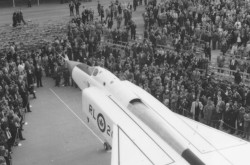
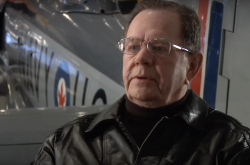




![A block of photographs showing some of the people involved in the bombing of beluga whales in the estuary and gulf of the St. Lawrence River. Anon., “La chasse aux marsouins [sic]. » Le Devoir, 15 August 1929, 6.](/sites/default/files/styles/thumbnail_7/public/2024-09/Le%20Devoir%2015%20aout%201929%20page%206.jpg?h=584f1d27&itok=TppdLItg)






